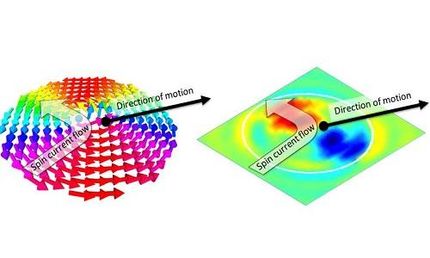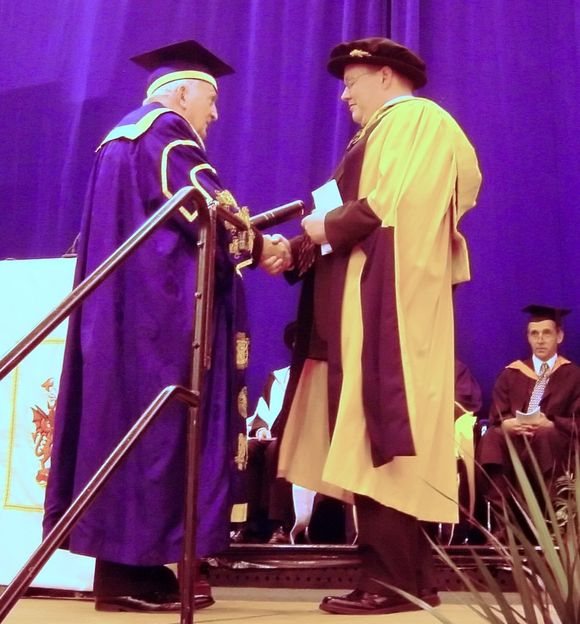Improving solar cell technology using new materials and nanowires
Researchers at Rochester Institute of Technology are expanding solar cell technology using nanowires to capture more of the sun's energy and transform it into usable electricity. Comparable to ultra-thin blades of grass, nanowires added to today's conventional materials are capable of capturing more light and can be cost-effective solutions for adopting solar energy into the broader consumer market.

andreas160578; pixabay.com; CC0
One of the larger global challenges today is meeting energy demands, and alternative energy solutions such as solar power are being sought. Using nanowires for solar cells has been an active field for nearly 10 years. Until now, few researchers have conclusively demonstrated how different materials beyond silicon and nanowire arrays can be used to achieve increased solar energy. An RIT research team is exploring an unconventional process to improve solar power conversion efficiencies to convert sunlight into useful electrical energy. Their work focuses on maximizing how much of the solar spectrum can be taken in using tandem junction solar cells based on III-V compounds--metallic and non-metallic elements on the Periodic Table to supplement silicon, said Parsian Mohseni, assistant professor of microsystems engineering in RIT's Kate Gleason College of Engineering.
"III-V tandem devices are the best in the world, but because of the manufacturing and initial materials costs, they are very expensive to produce. Therefore, they are not used in consumer markets. They are used in niche applications such as space technologies. You are not going to see today's III-V devices on large solar panels on people's rooftops, because they are so expensive," said Mohseni, who has experience developing solar cells using III-V materials and researching these materials' capacity to absorb a wider range of the total solar spectrum. He was recently awarded nearly $300,000 for an Early Concepts Grant for Exploratory Research (EAGER) from the National Science Foundation for "Two Dissimilar Materials (TDM) solar cells: bifacial III-V nanowire array on silicon tandem junction solar cells." EAGER grants support high-risk but potentially high-reward transformative technologies. Mohseni's research into combining III-V compounds with silicon--expanding the means to collect energy from the sun for optical and electronic devices--could also open new paths toward next-generation integrated photonics and high speed transistors. These technologies are only two of the key research and development strategies in RIT's Future Photon Initiative.
Tandem junction solar cells are groupings of multiple sub-cells each of which can absorb a particular range of a wider solar spectrum band. Mohseni's team has been able to grow a variety of different III-V compounds for solar cells using the selective area epitaxy technique using a metal-organic chemical vapor deposition system, also referred to as MOVCD, located in the Semiconductor Manufacturing and Fabrication Lab, a high-tech clean room and teaching facility in RIT's engineering college. Installed at RIT in 2015, the MOVCD is operated by the NanoPower Research Lab (NPRL), led by Mohseni's co-principal investigator on the project, Seth Hubbard, NPRL director. The MOVCD is an important piece of equipment that produces crystalline III-V semiconductors. These III-V compounds refer to a set of elements from the Periodic Table that are being introduced into the development of higher capacity semiconductors. Crystals produced have conductive properties similar to or higher than silicon, which is currently the primary component of microelectronics, and RIT's research to solve structural, manufacturing and cost challenges is expected to advance the technology.
"There is a lot of science and engineering that goes behind making tandem junction solar cells and there are some real challenges in doing that," he explained. "How we can grow this in a single monolithic structure is very tricky from a technical stand point. The analogy I use in my class is trying to stack Lego blocks together."
Individual Legos have different separations between the protruding cylindrical knobs on top and the openings on the bottom of the block where the two parts come together. Legos interlock accurately because all the blocks have the same diameter and equal separations between the cylinders and the openings.
"The problem is, nature does not cut us that break," Mohseni said, referring to the new III-V materials being developed and the challenges to find ways to combine them as precisely as the Lego blocks.
His team is developing the engineering processes on the crystal growth side to make these dissimilar materials fit together to decrease defects and gaps. By changing the architecture entirely, and using nanowires instead of thin films, this process could alleviate defects that form along conventional hetero-epitaxial bulk materials and thin films, and allow for saving nearly 90 percent of the material used to make the devices. Mohseni and his research team will utilize vertical nanowire structures having a diameter of approximately 100 nanometers, and lengths up to several microns, a replacement for the thin films that are currently being used for semiconductor development.
"If you are trying to absorb material in a film, you want that film to be thick enough to capture more light. If light is not absorbed, it can bounce or reflect off the film surface," Mohseni explained. "With nanowires, if light comes in, it can still be absorbed, but if it bounces off one wire in the array, instead of going off into infinity, it can be captured by the nearby wire and be re-absorbed. This effect of multiple scattering interactions increases the light-trapping capabilities of the nanowire array. Even though we are using 90 percent less material, we can absorb light better than a thin film structure."
The project, which will be conducted over two years, aims to expand the scope of III-V solar cells beyond niche markets, eventually incorporating the technology into homes, electrical grids or transportation systems, for example.
"It is sort of giving power back to the people - taking real energy and power-conversion technologies and putting that in the hands of the people. That's the big picture, the long-term goal. This is one potential step toward that," Mohseni said.

































































